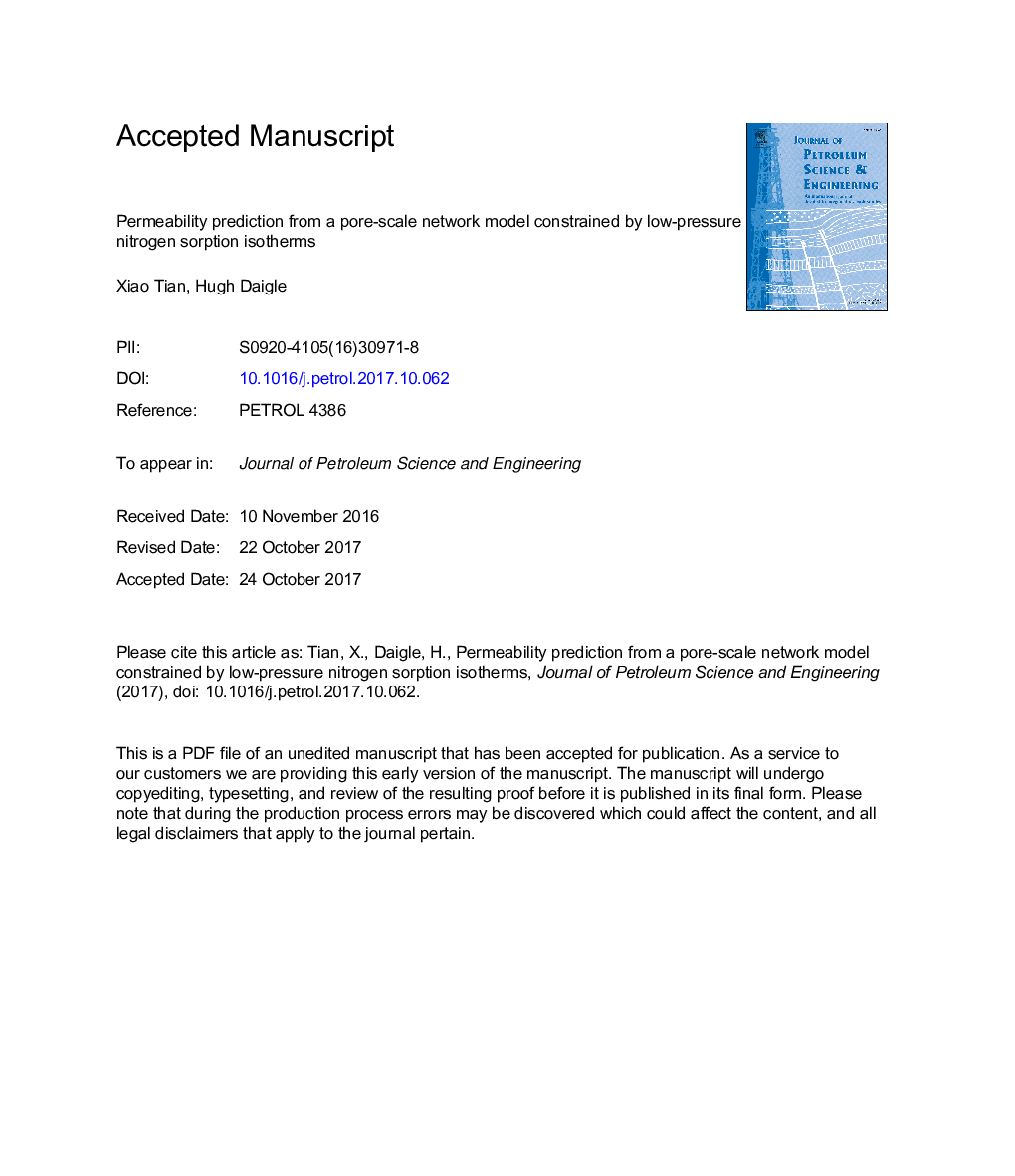| Article ID | Journal | Published Year | Pages | File Type |
|---|---|---|---|---|
| 8125498 | Journal of Petroleum Science and Engineering | 2018 | 32 Pages |
Abstract
The matrix permeability of shale is controlled by the microstructure of shale pore network. Therefore, a thorough understanding of shale pore structure is fundamental to the prediction of shale permeability. We constructed a physically representative pore network model for two Barnett Shale samples. We predicted a Darcy permeability of 7.19 nanodarcies (nd) and apparent permeability of 57.34 nd for these samples. We explored the pore structure of shale matrix with low-pressure nitrogen adsorption/desorption isotherms. The pore size distribution, the network connectivity, as well as pore spatial arrangement are determined for the organic matter and the whole matrix. We separated pores in the network model into two groups: the affiliated pores and the dominant pores. For these samples, the affiliated pores are pores with diameters smaller than 8Â nm and the dominant pores are with diameters larger than 8Â nm. The affiliated pores develop on the walls of the dominant pores. The cutoff value between affiliated pores and dominant pores may differ for different samples. The pore spatial arrangement is validated against previous literature resultsand a diagenetic explanation for development of shale pore system. The network model can be used to predict shale permeability and other petrophysical properties.
Related Topics
Physical Sciences and Engineering
Earth and Planetary Sciences
Economic Geology
Authors
Xiao Tian, Hugh Daigle,
